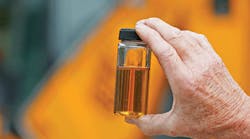Filtering Out Hydraulic Problems
How clean is your hydraulic fluid? Almost never as clean as you think, and as a recent Hydraulics & Pneumatics article posted to our LinkedIn page notes, it’s the age-old problem of enough maintenance vs. too much maintenance. Getting this issue wrong can have serious consequences.
“Most contamination particles in hydraulic fluid are too small to be seen by the naked eye, which is why contamination-monitoring instruments are important for maintaining high system reliability,” writes article author Justin Bitner, a product specialist at Eaton. “While users of industrial hydraulic systems have dealt with this issue for some time, it has only recently come to the fore in the mobile world, where spin-on filters and time-based fluid maintenance are still commonly found. Neither of those technologies, however, is sufficient to protect today’s high-pressure, high-performance mobile hydraulic systems.”
Get more daily insights by checking out our Hydraulics & Pneumatics LinkedIn page.
Five Filtration Factors
Another question: How do you find the right filter for your specific application? An article from Donaldson looks at ways to determine the best filtration fit. The article cites five factors to consider:
- Cleanliness requirements of the components
- Ambient contamination
- Duty cycle of the equipment
- Confidence in maintenance practices
- Other factors that vary from application to application

